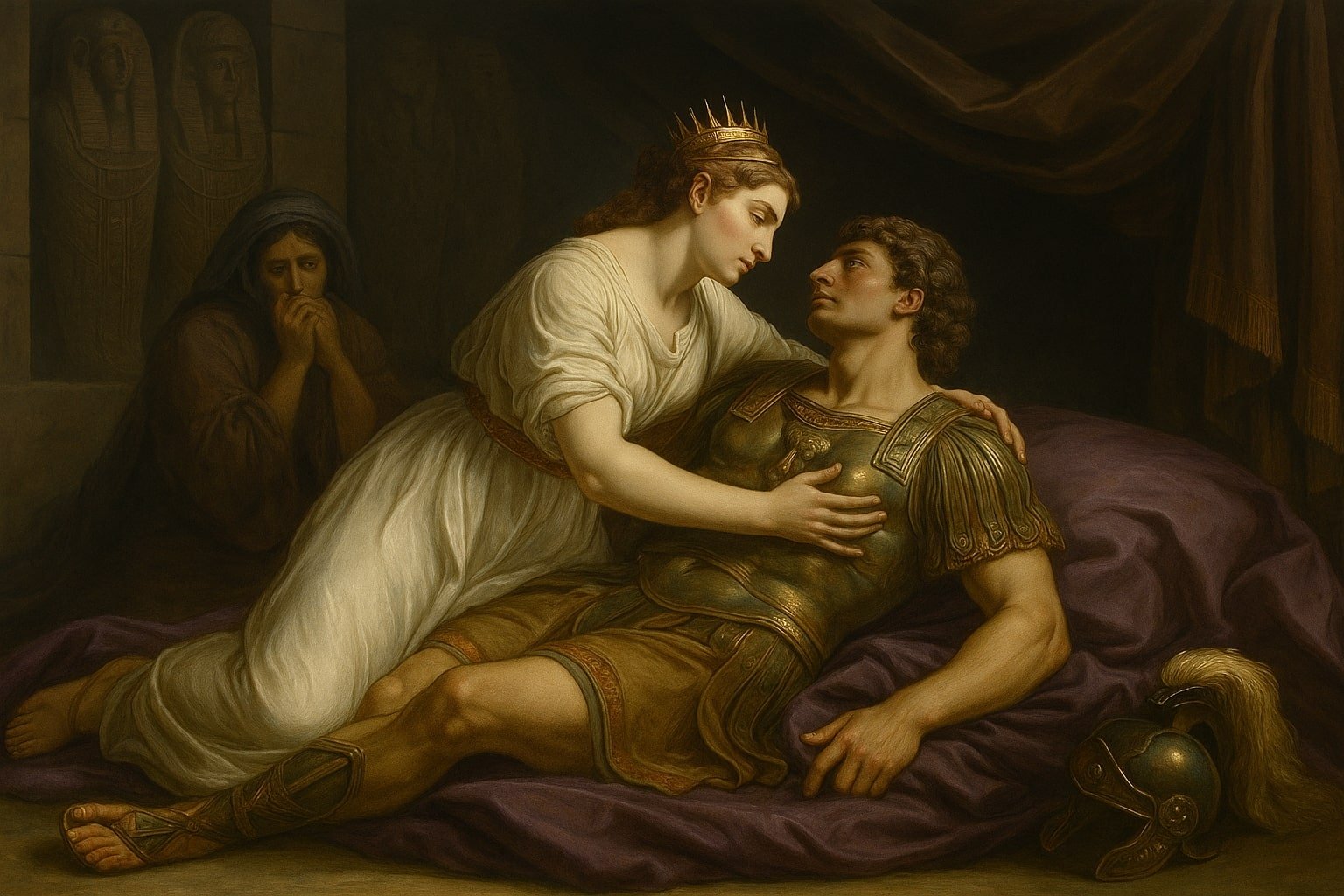Cleopatra VII, the last active ruler of the Ptolemaic Kingdom of Egypt, remains one of history’s most enigmatic figures.
After their defeat at the Battle of Actium in 31 B.C., Cleopatra and Mark Antony returned to Alexandria. As Octavian‘s army approached, Antony took his own life. Soon after, Cleopatra committed suicide on August 10, 30 B.C., by letting a venomous snake bite her and her two handmaidens. Or was it something else?
Who Was Cleopatra?
Cleopatra (born 70/69 BC – died 10 or 12 August BC, Alexandria) was the last active ruler of the Ptolemaic dynasty of Egypt. Renowned for her intelligence, political acumen, and romantic relationships, she is most famously known as the lover of Julius Caesar and later the wife of Mark Antony.

The Death of Cleopatra: What Happened?
After losing the Battle of Actium, Antony and Cleopatra retreated to Alexandria, where many of their allies switched to Octavian’s side. Cleopatra built a two-story mausoleum near a temple of the goddess Isis on her palace grounds.
By late July 30 B.C., Octavian’s forces reached Alexandria. Hearing a false report of Cleopatra’s death, Antony stabbed himself and died in her arms.

On August 9, Cleopatra was warned that Octavian planned to take her and her children to Rome. The next day, she locked herself in her mausoleum with two servants and sent a note to Octavian asking to be buried with Antony.
When Octavian’s men broke into the mausoleum, they found Cleopatra dead on a golden couch, with her two servants also dead or dying. She was 39 and had ruled Egypt for over 20 years.
The Snake Bite Theory
The most popular theory surrounding Cleopatra’s death is that she took her own life by allowing a venomous snake—either an asp, a small viper, or an Egyptian cobra—to bite her.
However, modern Egyptologists have raised several doubts about this narrative. For one, Egyptian cobras typically grew to be between five and eight feet long, making it highly improbable to conceal such a large snake in a small basket. Additionally, venomous snake bites are not always instantly lethal. They often cause a slow and painful death, which contradicts the relatively brief time it took for Cleopatra to send a final note to Octavian and for his guards to arrive. This suggests that a snake bite would not have been an efficient or plausible method to end her life swiftly.

The Poison Theory
While the popular image is that Cleopatra ended her life via a venomous snake bite, some historians argue that this explanation is less likely and point to a more plausible method: a lethal herbal poison, either ingested or applied topically.
Reports state Cleopatra’s handmaidens died alongside her. A toxic concoction administered to all would explain their simultaneous deaths, supporting the theory that the poison was ingested or applied in a way that affected all at once.
Was It Suicide?
Others suggest the death of Cleopatra may not have been suicide at all. Octavian, the future Augustus, had every reason to eliminate her while maintaining the illusion of Roman justice. A staged suicide would erase a political threat and protect Rome’s image.


